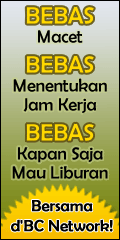Ah, there is nothing like being an expectant mom. Along with your expanding waistline comes the ever growing list of products for you and your new bundle of joy. Preparing for a new baby can be a costly experience, especially in the areas of clothing and nursery furniture. The good news is that it does not have to be!
Let’s talk about buying baby clothes…think RESALE! Every new mom gushes over the adorable clothing available for babies, but they often come with a not so adorable price. Resale clothing costs a fraction of the retail price. Buying resale clothing does not equal buying trash! Moms sell their baby’s clothing to resale stores for a variety of reasons. Babies outgrow clothes so quickly (normally before they show any wear) they simply cannot use them anymore. Many precious newborns receive more clothes than they can wear in a season (everyone loves to buy baby clothes for shower gifts–they are just too cute!) that cannot be returned and they end up in resale stores with the tags still on! If you have the time and know what you are looking for, you can find plenty of designer and brand name clothing for a steal!
Buy now…save later! There is more beauty to the changing of the seasons than just the landscape! As the temperatures change, so do the prices of baby clothing! Most stores slash the price of their clothing up to 75% by the end of the season to make room for new clothes. Take advantage of this by buying a size or two larger than your baby’s current size for him/her to wear the next year. The savings are amazing!
Another large expense when you are preparing for a new baby is furniture for the nursery. A good place to start when considering which pieces to buy is determining how much room you have to work with? Do you have a large room or do you need multipurpose furniture? A crib is a necessity and a given; however, you can pick and choose other nursery pieces. Combination pieces such as dresser/changing table combos are available at some stores and can save you from buying two pieces. Cribs with attached drawer space that convert to toddler beds are also available and will save you a lot of space. Thinking ahead when buying nursery furniture will save you both time and money in the future. By buying a combination piece of furniture for your nursery, you eliminate having to sell furniture you no longer need, as well as spending time looking for and more money on new “big kid” furniture.
Now that you have decided what to buy, it is time to shop! Once again, think resale! There are many children’s resale stores that carry pre-owned nursery furniture for 50% or more off retail. They usually have several styles to choose from in different price ranges. If you find something you like, they will usually hold it for you (if you were not really prepared to take it home) and some stores may even have lay away plans.
Another great place to buy pre-owned furniture is the classified ads in your local newspaper. Seller’s usually place ads on Thursday or Friday so they can catch the weekend readers. If you find something you are interested in, call quickly! Good furniture does not last long! Make sure you ask the seller plenty of questions. It is important to know before heading out to look at furniture things like the manufacture name, the age, if they have pets (if you are buying cushioned items and allergies are an issue for your family) and the exact color (if it is not adequately described in the ad). Asking these questions may be uncomfortable, but they can save you a lot of time and gasoline looking at something you know you will not be interested in. When you do look at pre-owned furniture from the newspaper, take someone with you and know what you are looking at. Are the style and the manufacturer of the furniture worth what the seller is asking for it? Is the furniture reasonably priced for it’s age and condition? With a little knowledge, buying pre-owned nursery furniture can save you BIG money!
Awaiting the arrival of your new baby is an exhilarating time! Add to the excitement by saving money on quality gently worn (and sometimes new) clothing and pre-owned nursery furniture!








